The gem-mining centre of Sri Lanka is also a major crossroad between southern plains and the hill country to the east. A bustling market city servicing most of the surrounding towns. Many of the prominent gem dealers in Sri Lanka operate from this town.
Sinharaja Forest Reserve, a biodiversity hot spot, a biosphere reserve and a UNESCO world heritage site borders the Rathnapura district while Udawalawa National Wildlife Park is the most accessible elephant habitat from capital, Colombo. Rathnapura’s numerous waterfalls provide ideal picnic spots and recreation to many who flock to the city during the vacations while sacred Samanala Kanda or the Adam’s Peak is believed to hold the footmark of Lord Buddha himself. In the midst of Rathnapura is the Maha Saman Devalaya, the main temple of God Saman, the patron deity of Sri Lanka itself.
Ratnapura
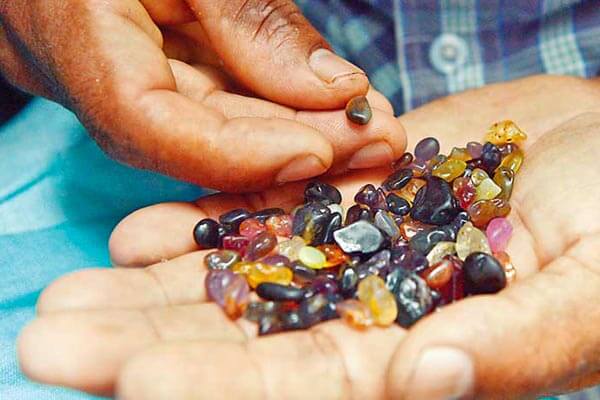
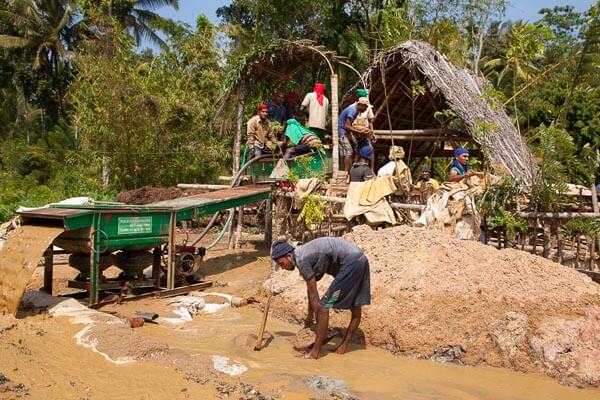
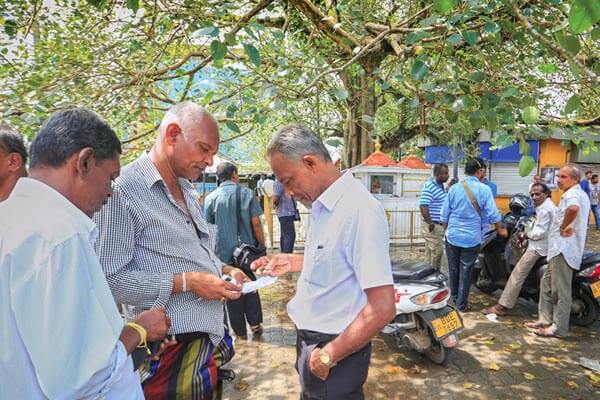
Ratnapura is best known as Sri Lanka’s gem capital – in fact the name, Ratnapura translates to “City of Gems”. The busy town is home to numerous gem museums, where visitors can see local precious stones as well as numerous exhibits related to gem mining. At the heart of the town lies clock tower, the area around which is the best place to watch locals buying and selling gems. The huge variety of gemstones found here include sapphires, zircons, garnets, rubies and cat’s eyes.
Ratnapura receives abundant rainfall and as a result the surrounding is very green. Large tea and rubber plantation as well as paddy fields are common sight in this area. The paddy fields are dotted with gem mines, which can be organized by their wooden shacks. Mining here is still carried out in the traditional manner using hand stools such as chisels, shoves and hammers. The process begins with digging a pit in the ground, after which earth is removed, washed, sieved and gemstones are separated. Visitors cannot descent into the mine itself and can only see the working from the top. Visits to an operational mine can be arranged by local travel agents as well as by guest-houses and hotels.
Adam’s Peak
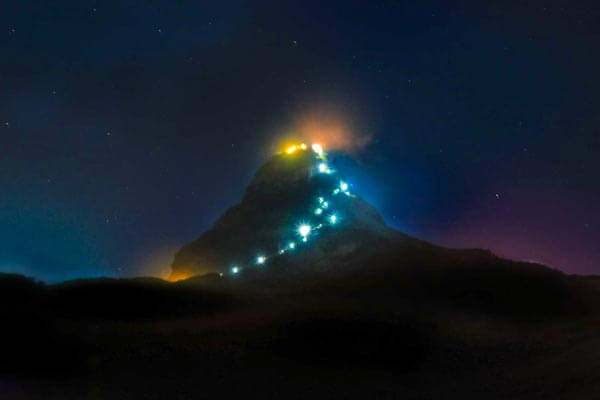
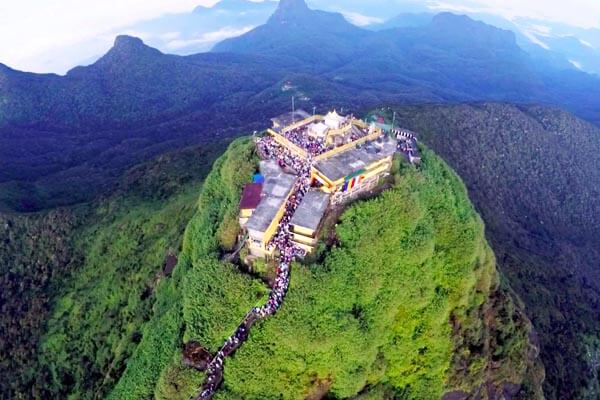
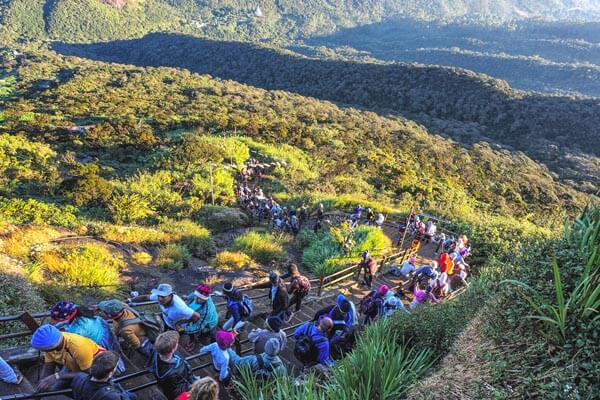
The 2,243-m Adam’s Peak is also known as Sri Pada, which means Sacred Footprint- referring to the rock formation at the summit. While Buddhists believe it to be an imprint of Buddha’s foot, Hindus associate it with Shiva, Muslims with Adam and Christians with St Thomas. The Peak is, however, primarily a Buddhist site. Saman, one of the island’s most important gods, is believed to be the guardian deity of the peak.
The easiest and shortest route up the mountain is from Dalhousie, where the majority of visitors base themselves, but many pilgrims also climb from the Ratnapura side. The 7 km ascent consists of around 5,500 steps. The climb is traditionally made at night- most people set off at 2am and take about 4 hours to reach the peak to watch the break of dawn. It is possible to climb during the day, but the peak is often shrouded in cloud then and the views are obscured.
The summit itself is covered in a jumble of buildings. The footprint lies sheltered under a pavilion, where people can be seen praying or ringing the two bells nearby to mark their ascent. As dawn breaks, the sun casts a unique triangular shadow of the peak that seems to hang in mid-air in front of the mountain.
The pilgrimage season begins in December and continues until May. During this period, the steps leading to the peak are illuminated, and there are little stalls along the road route offering tea and snacks to pilgrims and tourists. However, it may be a good idea to bring a torch, as some sports near the starting point can be dark if the lights are not working. On poya days, long weekends and during the Sinhalese and Tamil New Year in April, the mountains paths can get very busy. Be sure to set aside enough time to reach the summit- it is common to get stuck in slow-moving queue.
Although a guide is not needed in season, as there will be many others making the ascent, it is advisable to hire one during the off season when the way up can be lonely and dark. Solo travelers can organize a guide or team up with others; dinner at the Slightly Chilled Guest House is a good opportunity to strike up conversation and find walking partners. Bringing warm clothing is recommended, since it can be cold at the summit. It is also advisable to wear sturdy shoes and carry water, a hat and sunscreen- once the sun is up, it can be scorching.
SINHARAJA FOREST RESERVE
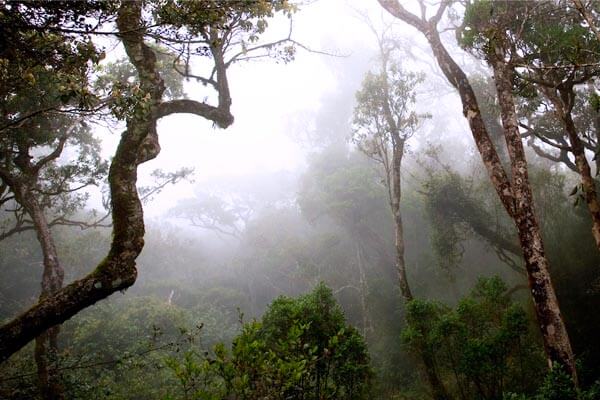
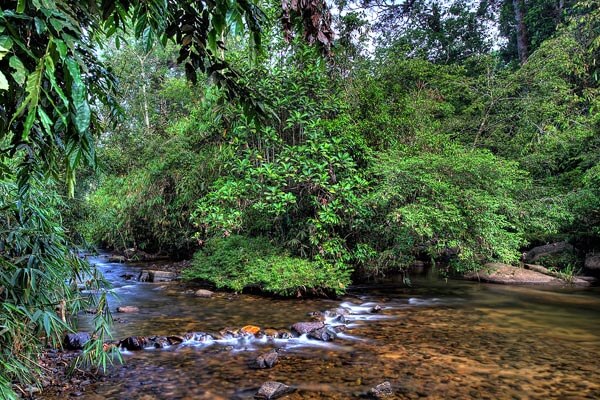
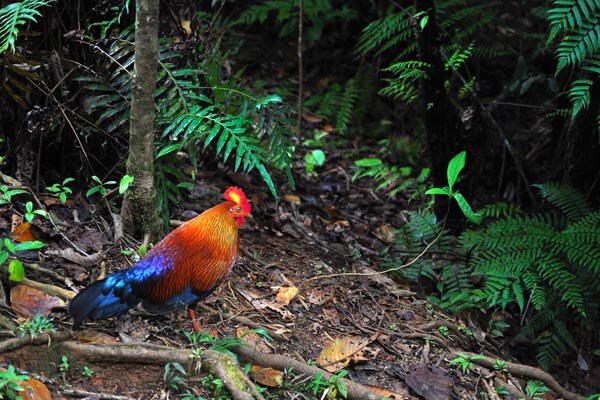
Sinharaja, the largest great lowland Gondwana Rainforest in Southern Asia, offers a living repository of a pristine ecosystem. The tropical jungle stretches across three districts, Matara,Galle, and Ratnapura. Sinharaja is topographically defined by a combination of valleys and ridges, spreading across 11,250 hectares. Spiked up by nine prominent peaks ranging from about 575- 1,170 meters of which the highest is Hinipitigala located at the Northeastern part of Sinharaja, with several waterfalls, cascading from the tributaries of the Gin and the Kalu Ganga.
Just a few hours’ drive from the main city of Colombo, Sinharaja can be visited in a day, however a three to four days expedition would be an ideal preference. The forest can be accessed through four main routes, Kudawa(North-Western), Pitadeniya (Southern), Morningside (Eastern), and Neluwa (South-Western). All four areas provide nature trails to an alluring wildlife. The entrance through Kudawa is the most commonly used by many nature explorers, since it provides easier access and many wildlife activities through nature trails such as Mulawella trail, and the Singhagala trail.
Sinharaja, is famed as Sri Lanka’s first World Heritage Site declared by UNESCO for its rich biodiversity, and is listed to be one of the top 25 Global Hotspots. Prior to being declared as a World Heritage Site in 1988, it was declared a man and Biosphere in the late 1978. Sinharaja forest is home to about 60 bird species of which 33 are endemic in Sri Lanka, rare insects around 71 reptiles 33 amphibians and 19 fish species. Every inch of berating space bears life, from unimaginable tiny micro- organisms to colourful fungi decorating the forest floor, to ferns and orchids that are vastly found in a striated structure of greenery. Three beautiful waterfalls Pathan –oya fall, the Haknaella fall, and the Kekuna Ella waterfall can be sighted along the journey.
Rain comes in abundance to Sinharaja with its mean annual rain fall varying from 3000- 6000 mm. Nocturnal activities come alive after these showers, with the croaks of the amphibians calling for their mates especially near water pools, and river banks. The Morningside is the ideal location to watch a large number of endemic amphibians in one place. Also another nocturnal owl the Frog Mouth can be observed here but its camouflage makes it very difficult to spot them at day time leave alone in the darkness. A leech or two is bound to accompany your trek within the rainforest. So guarding yourself with a pair of leech socks or a suitable parasitic repellent would definitely make your trek more enjoyable.
The Forest Department maintains several bungalows and dormitories which are located at Kudawa, Pitadeniya, and Morningside, apart from which there are several private hostels, bungalows and lodges for visitors who come to the forest. For the people who call this place home, Sinharaja is their lifeblood. Their traditional, simple and basic ways have sustained them for many years. The jaggery, and treacle industry made from the sap of the ‘Kitul Palm’, is a specialty here. A piece of jaggery accompanied with a cup of plain tea will undoubtedly relieve the weariness of the journey. The hospitality of these villagers with their simple thatched homes, and undemanding life styles have become a part of a rich cultural heritage of Sinharaja.
Activities : Forest walk, Birds Watching Wildlife experience
Udawalawe National Park
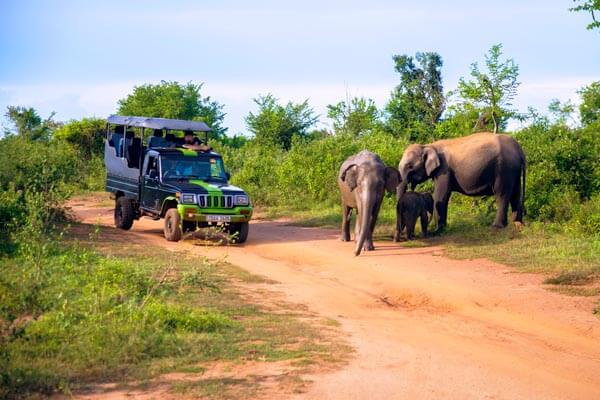
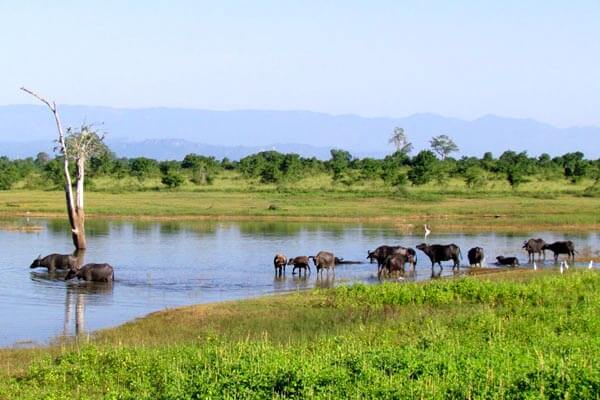
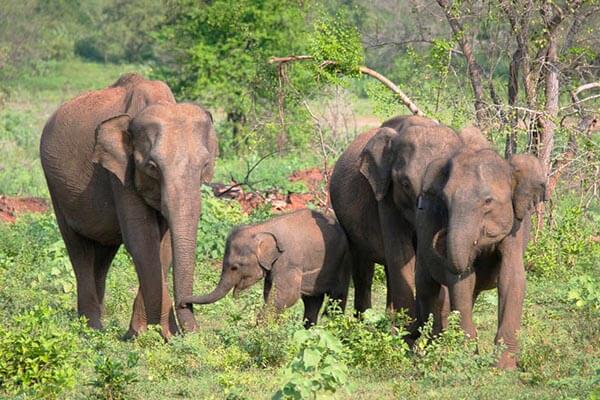
One of Sri Lanka’s most popular national parks, Udawalawe was created in 1972 to protect the catchment area around the enormous Udawalawe Reservoir. Spread over an expanse of 300 sq km, the park lies in the dry zone and its landscape consist of scrub jungle, grasslands and an abandoned teak plantation. Although the park harbors a variety of wildlife, ranging from water buffalo and sambar deer to the rarely sighted leopard and sloth bear, it is best known for its large resident population of elephants. Home to about 600 of these pachyderms, Udawalawe is a great place to observe elephants in their natural habitat. The park also supports a thriving population of water birds as well as birds of prey.
Elephant Transits Home
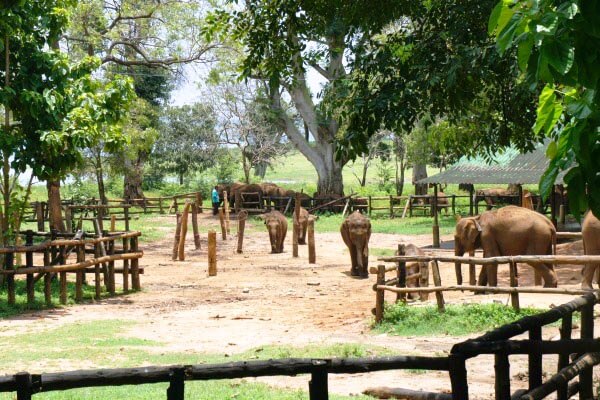
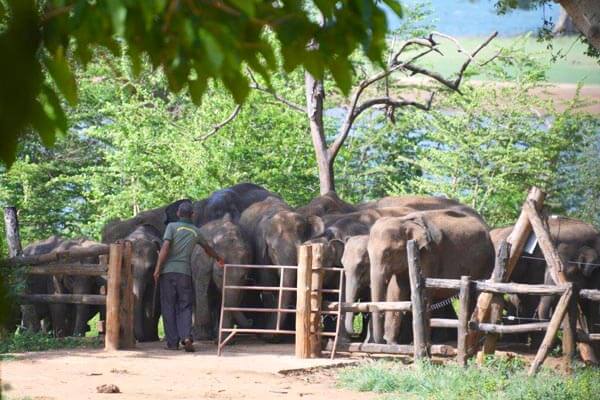
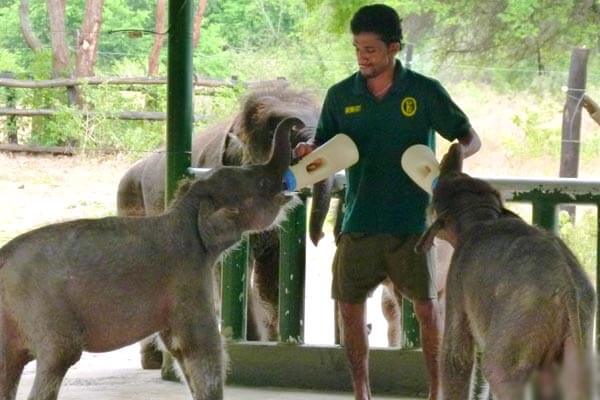
The Udawalawe Elephant Transfer Home is a facility within Udawalawe National Park in Sri Lanka that was established in 1995 by the Sri Lanka Department of Wildlife Conservation. Its primary objective is to rehabilitate orphaned elephant calves for ultimate release back into the wild.
Sri Lankan elephants (Elephas maximus maximus) are an endangered species and their survival in their natural habitats is threatened due to human activities. Elephants in the wild are constantly being killed, and many elephant calves become orphaned. In order to support these orphaned elephants, the Department of Wildlife Conservation set up the Elephant Transit Home within Udawalawe National Park with help from the Born Free Foundation. The facility was established under the 29th Amendment to the Fauna and Flora Protection Ordinance Part II. As of 8 February 2009, 39 orphaned elephant calves were being looked after. The elephant calves are released to the jungle after they become strong enough to survive in their natural habitats. As of 2008, sixty-five elephants had been released to the jungle.
Sri Lanka Dream Tours organize various tour activities that includes folk dance & music program, local house visits, local market visits, dinner or lunch with a local family of the area and much more like this. These activities are organized as part of your tour program and gives real experience of India to any guest visiting India with us.
